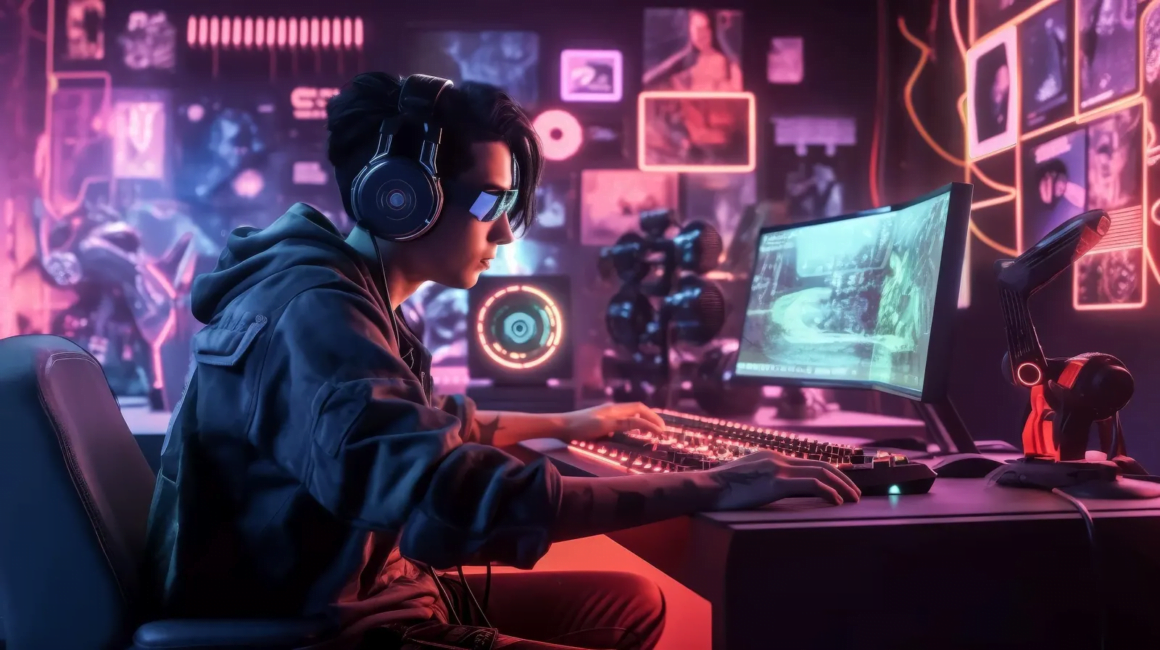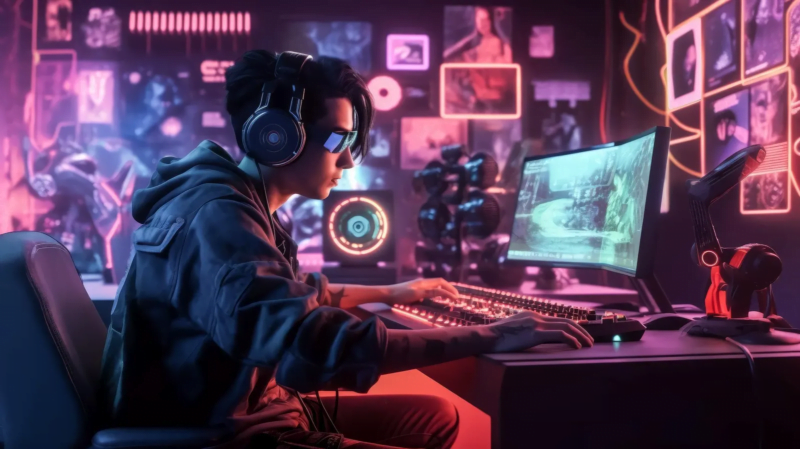Gaming technology has evolved dramatically over the years, transcending from simple pixelated graphics to immersive virtual worlds and complex narratives. As we look towards the future, advancements in game development and virtual reality (VR) promise to redefine interactive entertainment in unprecedented ways. This article explores the emerging trends in gaming technology, highlighting how they are shaping the future of gaming and virtual worlds.

Evolution of Gaming Technology
1. Graphics and Realism
Advancements in graphics processing units (GPUs) have enabled game developers to create visually stunning environments with realistic textures, lighting effects, and character animations. High-definition (HD) and 4K resolutions, coupled with technologies like ray tracing, enhance visual fidelity, making virtual worlds more immersive than ever before.
2. Artificial Intelligence (AI)
AI-driven technologies are revolutionizing gaming experiences by enhancing non-player character (NPC) behavior, enemy AI, and in-game decision-making. AI algorithms can create dynamic and adaptive gameplay scenarios, providing players with unique challenges and opportunities based on their actions and preferences.
3. Virtual Reality (VR) and Augmented Reality (AR)
VR and AR technologies are blurring the lines between the virtual and physical worlds. VR headsets allow players to step into immersive environments, interact with objects, and experience games from a first-person perspective. AR enhances real-world environments with digital overlays, creating interactive experiences that blend virtual elements with the physical world.
Trends in Game Development
1. Open Worlds and Sandbox Gameplay
The popularity of open-world games continues to grow, offering expansive environments for players to explore freely. Sandbox gameplay allows for player-driven experiences, where decisions and actions impact the game world and narrative outcomes. Games like “Red Dead Redemption 2″ and “Cyberpunk 2077” exemplify this trend with their vast, interactive worlds and complex storylines.
2. Cloud Gaming
Cloud gaming services are revolutionizing how games are accessed and played. By streaming games over the internet, players can enjoy high-quality gaming experiences on a variety of devices without the need for powerful hardware. Platforms like Google Stadia, NVIDIA GeForce Now, and Xbox Cloud Gaming (formerly known as Project xCloud) are leading the charge in cloud gaming technology.
3. Cross-Platform Play and Social Integration
Cross-platform play allows gamers on different devices (e.g., consoles, PCs, smartphones) to play together seamlessly. This trend promotes inclusivity and expands player communities, fostering a more connected gaming ecosystem. Social integration features, such as in-game chat, live streaming, and community hubs, enhance multiplayer experiences and facilitate collaboration among players.
Virtual Worlds and Immersive Experiences
1. Virtual Reality (VR) Games
VR gaming continues to evolve with advancements in hardware and software capabilities. Games like “Half-Life: Alyx,” “Beat Saber,” and “The Walking Dead: Saints & Sinners” showcase the potential of VR to create intense, immersive experiences where players can interact with environments and characters in unprecedented ways.
2. Emerging Technologies: Mixed Reality
Mixed reality (MR) combines elements of VR and AR to create hybrid experiences that blend virtual and physical environments. MR technologies, such as Microsoft’s HoloLens and Magic Leap, enable interactive storytelling, spatial computing, and innovative gameplay mechanics that transcend traditional gaming boundaries.
The Future of Gaming: Innovation and Beyond
The future of gaming technology holds exciting possibilities for innovation and creativity. Emerging trends such as AI-generated content, procedural generation, and real-time collaboration are paving the way for dynamic and personalized gaming experiences. As technology continues to advance, gamers can look forward to:
- Enhanced Immersion: Deeper immersion through realistic graphics, spatial audio, and haptic feedback technologies.
- Personalized Experiences: AI-driven personalization that tailors gameplay experiences based on individual player preferences and behavior.
- Expanded Accessibility: Greater accessibility features that cater to diverse player needs and abilities.
Conclusion
Gaming technology is at the forefront of interactive entertainment, pushing the boundaries of creativity, technology, and storytelling. From realistic graphics and AI-driven gameplay to immersive virtual worlds and emergent technologies like VR and MR, the future of gaming promises unparalleled experiences for players worldwide. As developers and technology enthusiasts continue to innovate, the gaming industry will continue to evolve, shaping the way we play, connect, and experience digital entertainment in the years to come. Embrace the future of gaming and prepare to embark on unforgettable adventures in virtual realms where imagination knows no limits.





